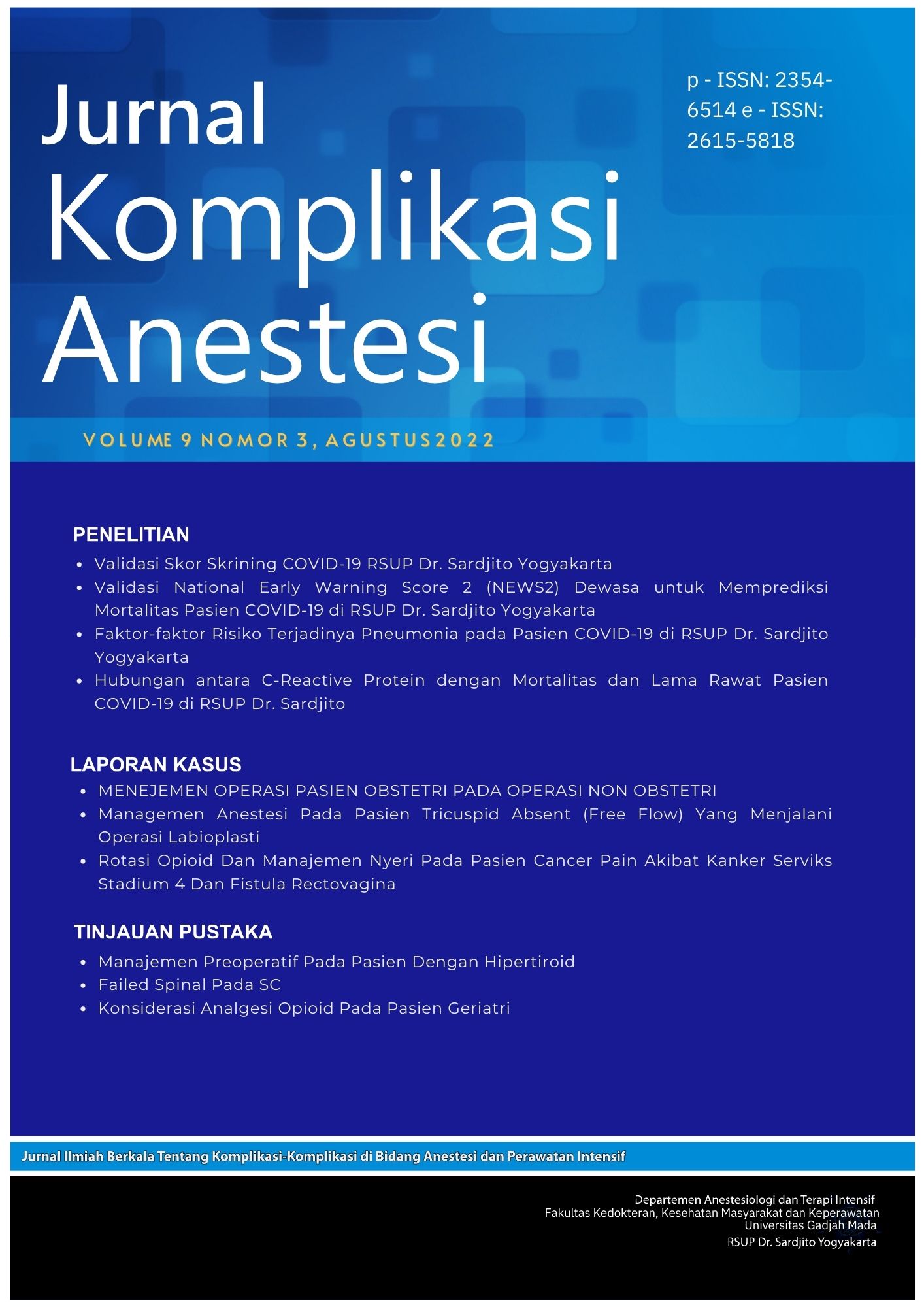Konsiderasi Analgesi Opioid pada Pasien Geriatri
Abstract
Based on the changing demographics of geriatrics today, it is expected that there will be an increase in demand for various surgical services, including vascular surgery and general surgery. DI Yogyakarta (14.71 percent) is the city with the largest geriatric population in Indonesia. In the geriatric age group, there are changes related to physiological functions, pharmacokinetics and pharmacodynamics. The use of opioids requires a 25-50% lower initial dose than the adult age group. The administration of opioids in geriatrics needs to consider: the type of opioid group, the level of toxicity, monitoring pharmacological effects and side effects that occur closely after the initial dose, and rotating opioids that allow the use of lower doses.
Copyright (c) 2022 Mahmud, Sudadi, Galang Martin Adityo

This work is licensed under a Creative Commons Attribution-NonCommercial-ShareAlike 4.0 International License.
The Contributor and the company/institution agree that all copies of the Final Published
Version or any part thereof distributed or posted by them in print or electronic format as permitted herein will include the notice of copyright as stipulated in the Journal and a full citation to the Journal.

















